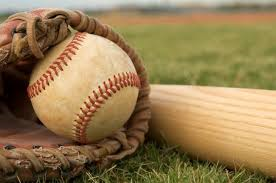Baseball is one of the greatest sports of all time. In this country, people have attended games, played games of catch outside with their children, and coached little league teams for generations in small towns everywhere. This is a story about a few of those children with some interesting medical lessons sprinkled in for good measure.
My most recent experience with damage from a baseball involves a beautiful little child who was playing catch with her father. As he recounted the story to me, he mentioned how well she was throwing her fastball. It was both accurate and consistent; he became more impressed the longer he threw back and forth with her. Over time, he slowly advanced his speed to 50% of his strength and still, she caught ball after ball. That is, until the one time she didn’t catch it. It hit her smack in the middle of her forehead. According to dad, the sound was significantly haunting. Her knees buckled from the pain and shock, she collapsed, however remained conscious throughout the experience. This is one tough little person.
Now let’s talk about the baseball bat. My most striking case (literally and figuratively) involved a school-aged boy many years ago. He was standing too close to the batter at a little league game. His forehead was on the receiving end of another child’s full swing using a metal bat. His father said the ghastly sound made him cringe as he ran out to help his son who was knocked unconscious by the blow to his head. The boy remembers standing near the batter waiting for his turn and waking up under my care in the ER.
When I reached his bedside, he was awake, alert, and talking with me but had the largest mound (pun intended) on his forehead that I have ever seen to this very day. In fact, pressing on his forehead left an indentation from my finger in the large hematoma (medical term for very large swelling with blood below the skin.) It still makes me a little woozy. We did not exactly call every concussion back in those days and as long as they could “eat, drink, walk and talk”, they were cleared to be discharged home.
However, I believed underneath that swollen forehead his skull had to be fractured. I presented the case to my attending and requested an X-ray. “It is not broken,” my attending said. “Are you kidding me? It has to be fractured in two”, I blurted. He said, “since you are about to be in practice on your own, I think it would be a good lesson for you to order that film. Go for it.” I remained convinced this young man needed an X-ray, so I went with it and of course, learned something important.
The bone was perfectly pristine and intact. The boy was discharged home to follow up for the concussion. “How did you know it would not be broken?” I inquired to my supervising physician. “In 30 years, I still have not seen a broken frontal bone. It is probably one of the strongest flat bones in the body.” To this day, I have yet to see a fractured forehead bone. I have lots of experience with small children falling out of grocery carts onto their foreheads; those accidentally whacked with sticks, bats, and balls, and have seen plenty of children recuperating after automobile accidents.
Finally, the most common injury has been “little league” elbow which is due to overuse while pitching. It boils down to being conservative with pitch counts: no more than 50-75 per game depending on age. Make sure your child has time off after pitching using the rule of 20’s: Twenty pitches or less requires one day of rest, 20-40 requires two days, and 40-60 needs three days. There is one final rule to preventing injuries in young pitchers and that is not allowing “breaking” pitches such as curveball, screwballs, sliders, knuckleballs, and other variations. Breaking pitches spin, as a result of applying finger pressure to the ball and snapping your wrist when releasing it. The mechanics needed to execute these pitches place undue stress on key joints in the elbow and shoulder. The USA Baseball Medical & Safety Advisory Committee recommends only players over 14 years old should be allowed to throw breaking pitches.
So much time is spent these days talking about football injuries, I figured a quick collection of my own experiences over the years might lend a little perspective. My best advice is to keep playing outside with your own children even if there are some stumbles and scrapes along the way. And take heart; at least you are not the father who hit his daughter in the face with his own fastball at half speed.
